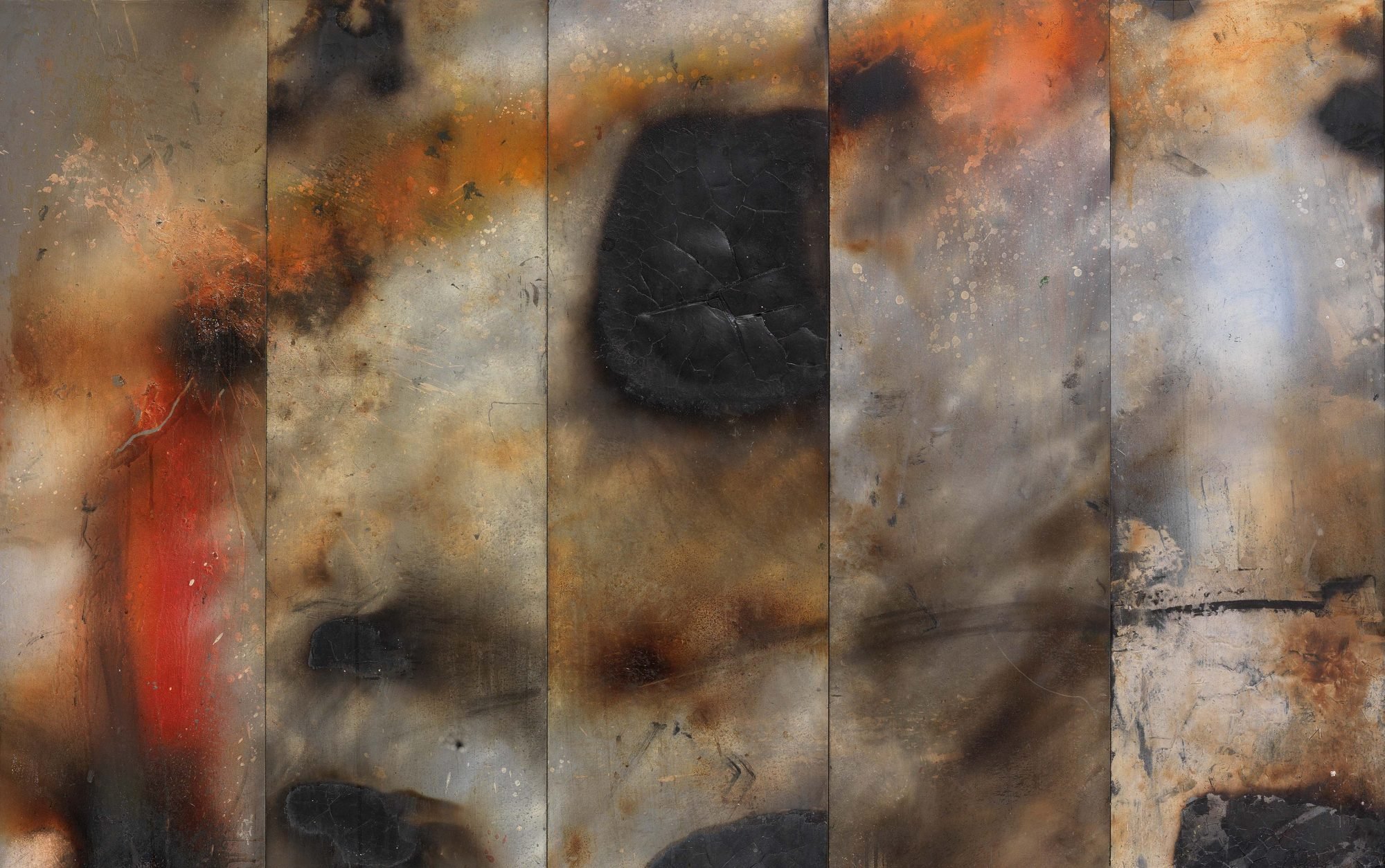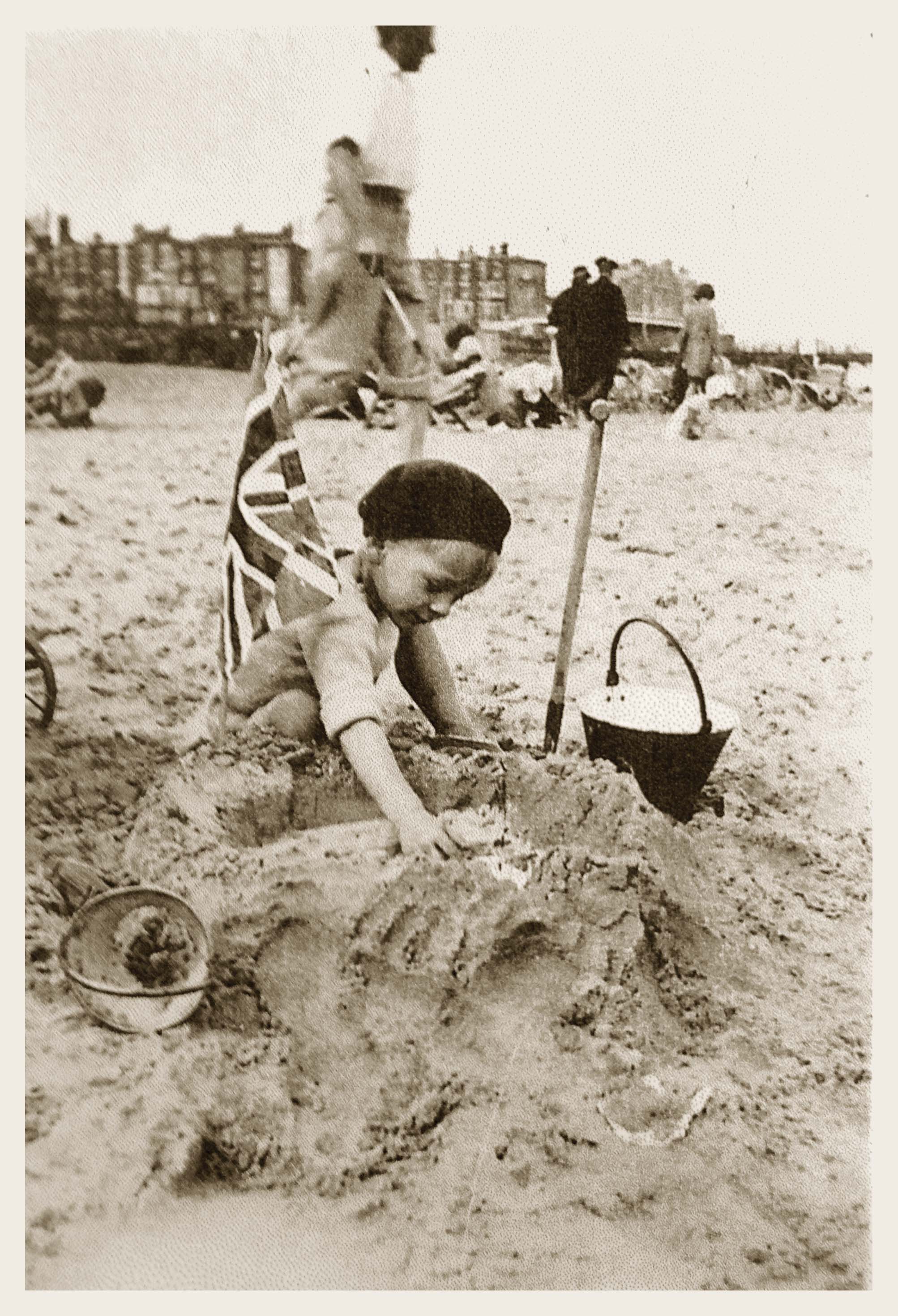John Blackburn MBE
(1932-2022)
‘The themes in his work have remained constant down the years, the ways in which he revisits them continually open to experiment and reassessment, to new inventions of form and material as he strives for what he describes as an elusive truth.’ Ian Massey
Bedfordshire to the North Shore …
Born in 1932 in a small village not far from Luton, Blackburn’s early years were characterised by a nurturing family environment; he attended Margate School of Art for three years from the age of 14, where he specialised in textile design receiving an unstructured education before being conscripted to the Royal Airforce. The experience of National Service had a profound affect on the young man, completing his formal education on day release to Maidenhead School of Art, against a background of military training delivered by ‘men fresh out of WWII, themselves brutalised’. On his demobilisation, he escaped the austerities of post-war Britain to travel through Malaysia, the Pacific Islands and New Zealand. In the southern hemisphere he met and fell in love with Maude McKinnon, an extraordinary woman who had established the first modelling agency in NZ. In 1956 they married and embarked on family life in Auckland; their children Victoria, Kerstin and Mark born in the following three years. John’s artistic life was influenced by the necessities of working to provide for his young family; the parochial nature of New Zealand’s art scene in the fifties; his relative isolation from international influence; and a self-education that shaped all the work to come. It was a time in which Blackburn began to think that he ‘may be able to become a painter’.
Returning to Britain …
Before leaving New Zealand, Blackburn produced a series of large experimental paintings with a new abstract force. The ‘Encaustics series’, unstretched sheets on hardboard worked in oil and household paints before being scorched and burnt, marked the artist’s breakthrough … ‘I panned for my own gold. I didn’t carry any baggage that anyone else had given me.’ This and following works were bought by one collector and enabled a return to Britain in 1961 with new found artistic confidence. That year Blackburn’s work was to be found alongside Ben Nicholson, Victor Pasmore, Terry Frost and others in the John Moores’ Liverpool Biennale and the following year he exhibited at the Woodstock Gallery. Blackburn found himself within the sphere of influential collector and gallerist Jim Ede who placed his work in Kettle’s Yard, Cambridge, alongside Peter Lanyon, William Scott and Roger Hilton.
In the mid-1960s 11 year old Victoria Blackburn contracted life-threatening kidney disease, the subsequent decade was shaped by the family’s battle to keep her alive. Experimental treatments resulted in three kidney transplants, including one from her father, and the subsequent health issues had a profound influence on family and professional life. Blackburn’s work narrates this time in colours, textures and form. Delicate, vulnerable and entirely ‘personal’; the fragility of human existence poignantly explored in the ‘Hostages series’ of the late 1970s.
Of Bears & other things …
With the relief of Victoria’s ultimate recovery and an extraordinary 3,400 mile charity walk with Maude in 1979, around the coast of the UK in aid of kidney transplant awareness, Blackburn’s creative energy was to find a new outlet. Alongside Maude, in the 1980s they established ‘Canterbury Bears’ an artisanal manufacturing business creating bespoke and limited-edition hand-made collectables. The family business grew in success and reputation in the decades to come, culminating for John with the honour of an MBE in 2013 for services to manufacturing and export. However, with the turn of the millennium and the business in the capable hands of Maude and his now grown daughter Kerstin, John Blackburn returned to painting with a new focus.
Millennial revival …
The early 2000s became a period of prolific painting and a chance discovery by notable art collector Christopher Penn, brought public interest to both new and retrospective work. In 2006 Blackburn’s exhibition at the Metropole Galleries in Folkestone (his first in a commercial gallery since 1967) brought with it broad critical acclaim. Texturally complex surfaces, an emphasis on materiality; his distinctly painterly touch, both metaphysical and sensual in nature, had reawakened his old audience and found a new. After an absence of a quarter of a century, Blackburn was back at the centre of the art scene, leading to further and continuing exhibitions with Osborne Samuel in London; Open Eye in Edinburgh; Lemon Street Gallery, Truro; and Artis in Auckland. His work is held in private collections across the globe, and in the public collections of Cambridge University; University of Kent; Royal College of Physicians, London; The British Embassy in Paris (on loan from Kettles Yard); Linacre House, Oxford; Essex University; Newcastle University; Dublin University; Kettles Yard, Cambridge; The Bank of Ireland, London.
A monograph by Ian Massey was published in 2018 by Sansom & Co.
In October 2022, after a short illness John Blackburn passed away with beloved family members at his side. The exhibitions in this year celebrated his 90th Birthday and an artistic career spanning seven decades, his extraordinary contribution to Modern British Art is a testament to his prodigious talent and fierce intelligence, a legacy for generations to come.















